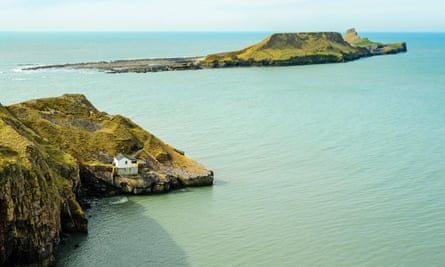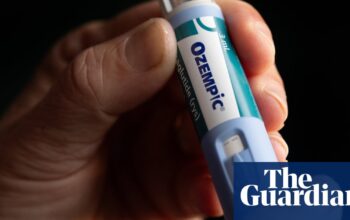It turned out to be a dangerous trip to a tidal island in Wales that, thanks to the RNLI, seven American students will never forget.
The group had to be rescued by the lifeboat service after the incoming tide cut Worms Head island off from the Gower coast on Saturday morning.
The students, who had been spending some time at Swansea University, found themselves stranded on the island as the high winds of Storm Éowyn raged across Wales, leaving hundreds without power.
After the RNLI received a report of two people in the water, the charity launched a lifeboat to rescue them.

The conditions at sea were so challenging that lifeboat volunteers had to make four trips to the island to bring the five women and two men back to safety in Rhossili.
“This was a challenging rescue,” said Jon Tarrant, an RNLI volunteer crew member who rescued the students along with fellow volunteer Stuart Payne. “The swell was up to two metres and the rise and fall of the water presented difficulties in picking up the people and also returning them to shore at Rhossili. It was also a rough passage to and from Horton to Worms Head.”
The rock causeway that leads to Worms Head is usually accessible two and a half hours either side of low tide, and the times it is normally open are on display at the entrance to the causeway.
The students were reportedly “extremely grateful” and said they could not believe all the crew were unpaid volunteers.
Lawrie Grove, the lifeboat operations manager for the Horton and Port Eynon station, called on people who take coastal walks to remember to check local tide times and plan their walks accordingly. “They should never try to swim or wade to shore when cut off by the tide, it is extremely dangerous.”
He added that sometimes the Worms Head causeway will close earlier when high winds accelerate the incoming tide and advised people who walk to tidal islands to “take a means of communication” with them.
He added: “If you find yourself in difficulty or see someone in difficulty on or near the coast, phone 999 and ask for the coastguard.”
In October, the RNLI rescued seven students who had also become stranded on the island. On that occasion, two of the students suffered bleeding and bruising as they tried to wade back to the shoreline.
According to the National Trust, the Worms Head takes its name from the Norse word Wurme, meaning dragon or serpent.
Vikings are said to have viewed the island as a sleeping dragon, because of the way its shape rises from the sea.
Source: theguardian.com


